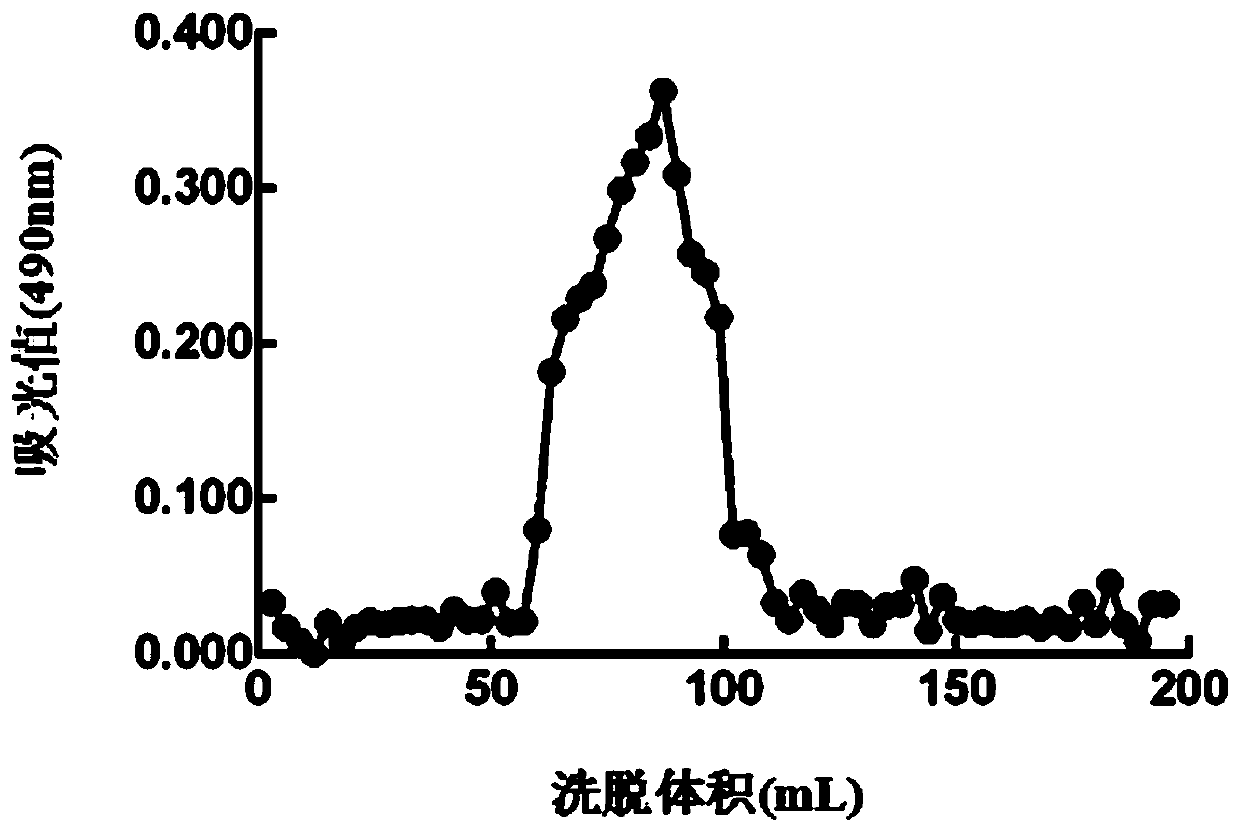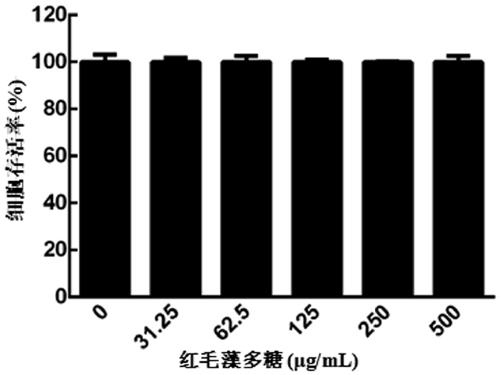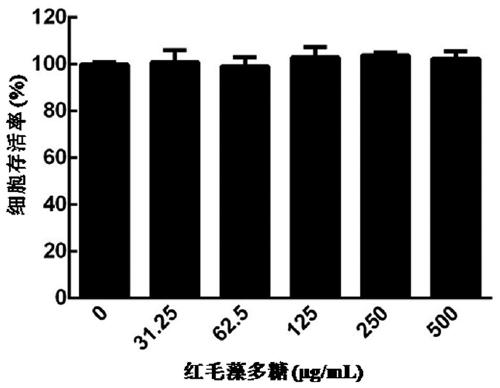Application of Bangia fusco-purpurea polysaccharide in preparation of medicine for promoting wound healing
A technology for wound healing and red hair algae, applied in the field of medicine, can solve the problem that the application of red hair algae polysaccharide has no relevant literature reports and the like
- Summary
- Abstract
- Description
- Claims
- Application Information
AI Technical Summary
Problems solved by technology
Method used
Image
Examples
Embodiment 1
[0031] The preparation of embodiment 1 red hair algae polysaccharide
[0032] The fresh red hair algae were washed and dried in an oven at 50°C to constant weight, and then pulverized into algal powder with a pulverizer. The algal powder was repeatedly soaked and washed three times by adding appropriate amount of methanol, and soaked overnight to partially remove pigment substances and alcohol-soluble impurities. After soaking, centrifuge at 4000g for 15min to collect the precipitate; add 1L of distilled water to the precipitate, extract in hot water at 90-100℃ for 2h, after extraction, centrifuge at 4000g for 20min, collect the supernatant, and repeat the residue Add 1 L of distilled water for hot water extraction at 90-100° C. for 2 h, centrifuge, combine the supernatants obtained by the two centrifugations, and evaporate and concentrate to 500 mL under reduced pressure to obtain a crude polysaccharide solution.
[0033] Mix chloroform and n-butanol in a volume ratio of 4:1...
Embodiment 2
[0035] Example 2 Determination of the toxicity of red hair algae polysaccharide to human umbilical vein endothelial cells (HUVEC) and human skin fibroblasts (HSF)
[0036] Toxicity of red algae polysaccharide to human umbilical vein endothelial cells (HUVEC) and human skin fibroblasts (HSF) was determined by MTT method.
[0037] Take the preserved HUVECs (or HSFs) for culture, and the HUVECs (or HSFs) in the logarithmic growth phase at 3 × 10 4 The concentration of cells / well was seeded in a 96-well cell culture plate at 37°C, 5% CO. 2 After incubating in the incubator for 24h, the cells were treated with different concentrations of red algae polysaccharide solution (0-500μg / mL) for 24h. After removing the supernatant, 50μL of MTT solution was added to each well, and the incubation was continued for 30min, and the supernatant was removed. After the solution, add 100 μL DMSO, shake for 20 min, and measure the absorbance at 570 nm (OD 570 ), and cell viability was calculated a...
Embodiment 3
[0041] Example 3 Experiment on the effect of red algae polysaccharide on the migration of human umbilical vein endothelial cells (HUVEC)
[0042] The preserved cells were cultured in HUVEC, and human umbilical vein endothelial cells (HUVEC) in logarithmic growth phase were grown at 5 × 10 5 The concentration of cells / well was seeded in 6-well cell culture plates at 37°C, 5% CO. 2 After 24 h of incubation in the incubator, use a sterile 200 μL plastic pipette tip to prepare a scratch of the monolayer of cells, then gently wash 1 time with PBS to remove the scraped cells. Next, human umbilical vein endothelial cells (HUVECs) were treated with 0 μg / mL, 20 μg / mL, 100 μg / mL, and 500 μg / mL of polysaccharide, respectively. Images were taken at 0 and 24 h using a bright field microscope (40x magnification). Analysis was performed using Image J and wound healing rate was calculated according to the following formula:
[0043]
[0044] Among them, T 0 is the scratched area at 0 h...
PUM
 Login to View More
Login to View More Abstract
Description
Claims
Application Information
 Login to View More
Login to View More - R&D
- Intellectual Property
- Life Sciences
- Materials
- Tech Scout
- Unparalleled Data Quality
- Higher Quality Content
- 60% Fewer Hallucinations
Browse by: Latest US Patents, China's latest patents, Technical Efficacy Thesaurus, Application Domain, Technology Topic, Popular Technical Reports.
© 2025 PatSnap. All rights reserved.Legal|Privacy policy|Modern Slavery Act Transparency Statement|Sitemap|About US| Contact US: help@patsnap.com



